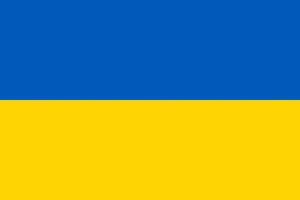Language/Ukrainian/Culture/Cuisine
Introduction[edit | edit source]
Welcome to the lesson on Ukrainian cuisine! In this lesson, we will explore the rich and diverse culinary traditions of Ukraine. Ukrainian cuisine is known for its hearty and flavorful dishes, which reflect the country's agricultural heritage and cultural influences. From savory dumplings to delicious borscht, Ukrainian food is sure to satisfy your taste buds. So let's dive in and discover the mouthwatering world of Ukrainian cuisine!
Ukrainian Cuisine: A Fusion of Flavors[edit | edit source]
Ukrainian cuisine is a vibrant fusion of flavors, combining traditional Ukrainian ingredients with influences from neighboring countries such as Russia, Poland, and Turkey. The cuisine is characterized by its use of fresh and seasonal ingredients, such as potatoes, cabbage, beets, mushrooms, and various types of meat, including pork, beef, and chicken. Herbs and spices like dill, parsley, garlic, and paprika are also commonly used to enhance the flavors of Ukrainian dishes.
Traditional Ukrainian Dishes[edit | edit source]
Ukrainian cuisine boasts a wide variety of traditional dishes that have been passed down through generations. Here are a few iconic Ukrainian dishes that you must try:
Borscht[edit | edit source]
Borscht is a hearty beet soup that is considered one of Ukraine's national dishes. It is made with beets, cabbage, potatoes, carrots, onions, and often includes meat, such as beef or pork. Borscht is typically served with a dollop of sour cream and a slice of rye bread. The vibrant red color and rich flavors make it a staple dish in Ukrainian households.
Varenyky[edit | edit source]
Varenyky are Ukrainian dumplings that are similar to Polish pierogi or Russian pelmeni. They are made by wrapping dough around a filling, which can be savory or sweet. Popular savory fillings include potato and cheese, sauerkraut, or meat, while sweet fillings often consist of fruits, such as cherries or plums. Varenyky are typically boiled and served with sour cream or melted butter.
Holubtsi[edit | edit source]
Holubtsi, also known as cabbage rolls, are a classic Ukrainian dish made with cooked cabbage leaves stuffed with a mixture of rice and ground meat, typically pork or beef. The rolls are then baked in a tomato-based sauce until tender and flavorful. Holubtsi are often served with a side of mashed potatoes and a dollop of sour cream.
Chicken Kyiv[edit | edit source]
Chicken Kyiv is a popular Ukrainian dish that consists of a chicken breast stuffed with seasoned butter, then breaded and fried until golden and crispy. When you cut into the chicken, the melted butter oozes out, creating a deliciously juicy and flavorful dish. Chicken Kyiv is often served with mashed potatoes or a fresh salad.
Cooking Methods[edit | edit source]
Ukrainian cuisine utilizes various cooking methods to bring out the flavors and textures of the ingredients. Here are some common cooking methods used in Ukrainian cooking:
Boiling[edit | edit source]
Boiling is a commonly used cooking method in Ukrainian cuisine, especially for soups and dumplings. It involves submerging ingredients in a liquid, usually water or broth, and cooking them until they are tender and fully cooked.
Baking[edit | edit source]
Baking is another popular cooking method in Ukrainian cuisine. It is often used for dishes like holubtsi (cabbage rolls), pampushky (Ukrainian garlic bread), and various types of pastries and cakes. Baking allows the flavors to meld together and creates a delicious golden crust on the outside.
Frying[edit | edit source]
Frying is a common method used for meats, vegetables, and dumplings in Ukrainian cuisine. It involves cooking the ingredients in hot oil or fat, which creates a crispy and flavorful exterior.
Pickling[edit | edit source]
Pickling is a preservation technique that is widely used in Ukrainian cuisine. Vegetables, such as cucumbers, cabbage, and tomatoes, are preserved in a solution of vinegar, salt, and spices. This process not only extends the shelf life of the vegetables but also imparts a tangy and savory flavor.
Regional Specialties[edit | edit source]
Ukraine is a large country with diverse regional cuisines. Each region has its own unique specialties that reflect the local ingredients and culinary traditions. Here are a few regional specialties worth exploring:
Hutsul Cuisine[edit | edit source]
Hutsul cuisine originates from the Carpathian Mountains in western Ukraine. It is known for its hearty and rustic dishes, such as banosh (a cornmeal dish), mushroom soup, and various types of pickles and preserves. Hutsul cuisine often incorporates wild herbs and mushrooms, making it a true reflection of the region's natural resources.
Crimean Tatar Cuisine[edit | edit source]
Crimean Tatar cuisine from the Crimean Peninsula is heavily influenced by Turkish and Central Asian flavors. Popular dishes include chebureki (fried turnovers filled with meat), pilaf, and manty (steamed dumplings). Crimean Tatar cuisine is known for its bold and aromatic flavors, often incorporating spices like cumin, coriander, and paprika.
Polissya Cuisine[edit | edit source]
Polissya cuisine comes from the forested areas of northern Ukraine. It features dishes that utilize ingredients like wild game, forest mushrooms, and berries. Traditional Polissya dishes include korozh (a type of buckwheat porridge), potato pancakes, and various types of stews.
Conclusion[edit | edit source]
Ukrainian cuisine is a treasure trove of flavors and traditions. From comforting soups to hearty dumplings, Ukrainian dishes are sure to delight your taste buds and leave you wanting more. So go ahead and explore the wonderful world of Ukrainian cuisine, and don't forget to savor every bite!
Sources[edit | edit source]
Other Lessons[edit | edit source]
- Sports and Leisure
- Language and Literature
- Modern music
- Politics and Society
- Folk music
- Arts and Music
- Media and Technology
- History and Traditions
- Tourism and Travel

